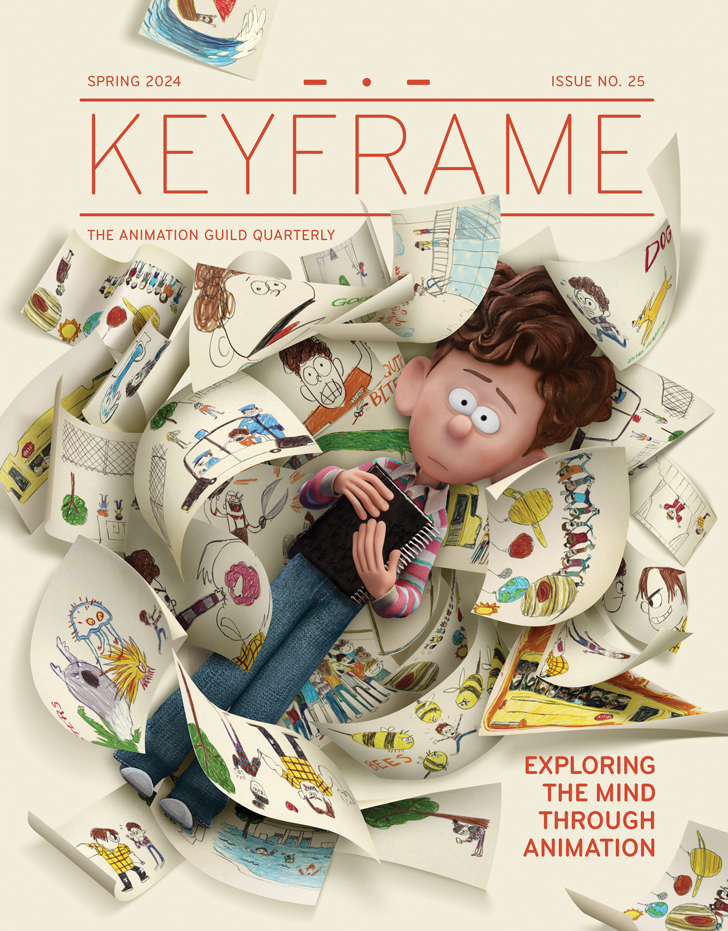Canvas feels like a personal story. What inspired it?
Canvas was inspired by my own personal experiences with loss and dealing with tragedy. We lost my father when I was five, and it impacted my entire family—especially my mother. As an adult trying to progress in the animation industry, I hit a rough patch creatively, questioning my own worth and position in it. But spending time with my niece reminded me that kids have this instinctive ability to bring joy to any situation. I was inspired to create again. With that, the idea for Canvas began to take root. I wanted to tell a story about overcoming grief and about surviving this type of trauma with the love and support of those around you.

It took five years to produce Canvas. Were there ever moments when you felt it might not move forward?
Yes, it took five years to make this labor of love! There were definitely times when I worried my idea wasn’t “good enough” or that I wouldn’t find enough money to get this across the finish line. But I put aside those doubts. I knew this was an opportunity to show my kids and other creators that look like me that you can use art to speak for you when words fall short.
Speaking of words, why did you omit dialogue from your story?
I’ve learned that body language can often speak louder than words. I want this film to translate to all audiences, so I chose to let our music and the characters’ body language and expressions drive the emotional heart of Canvas.
You’ve worked on some acclaimed, big budget animation movies. Why did you take the indie route with Canvas?
I’ve been really fortunate to work on some great projects. With Canvas, I took the indie route so I could create a film on my own terms. When I started, there were not a lot of animated projects featuring all black characters. I knew I wanted Canvas to connect with my community as we live in a world where we’re often forced to ignore processing our own tragedies. By making this outside of the traditional studio system, I knew I could create something for my community, and extend this idea of overcoming obstacles together to the production process.

You used a Kickstarter campaign to raise funds. Were there any other major obstacles to overcome?
The biggest obstacle we had to overcome as an independent film is that our budget was SIGNIFICANTLY lower than what we would have had at a studio. That said, we were able to problem solve and find ways to still bring quality when the budget didn’t really allow. For example, the hair, foliage and rendering were all done using Maya software, so we didn’t have to purchase external plugins and licenses.
What were the advantages?
I was able to not only craft the film how I desired, but also control the staffing process. It was important to me to collaborate with other artists of color and provide an opportunity for my team to grow and tackle new challenges.
What is next for you, both as an artist and as a producer focused on diversity?
As an artist, I’m always looking for ways to help bring stories to the world that speak to my community and represent different cultural experiences. I’m actually developing a new animated feature film with Netflix, who obviously share my passion for championing a diverse and inclusive creative process.
You have used your own work to create tutorials on your website. What role would you like to play in the careers of up-and-coming animators?
I’m a co-founder of a non-profit organization called Rise Up Animation (@riseupanimation) with Trent Correy, Bobby Pontillas and Monica Lago-Kaytis. Our goal is to connect emerging artists with established mentors in the animation industry and provide resources for all people of color trying to enter this field. It was important to foster this philosophy of mentorship and professional growth in Canvas, and I will always be passionate about encouraging young artists.







.png)